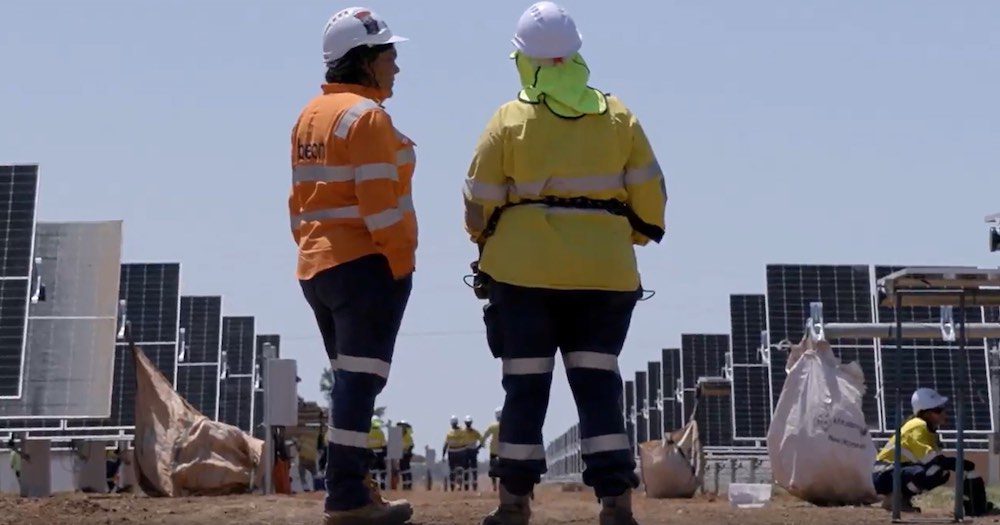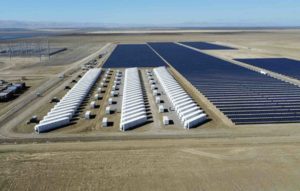The Australian government has a challenge. Having gone big on renewable energy and clean economy announcements, how does it now deliver meaningful outcomes for the regional communities who are experiencing the shift to clean energy first-hand?
The government’s level of ambition is welcome. The establishment of the Net Zero Economy Authority is positive news and a long time coming.
What we haven’t seen as we’ve been combing through details of the Federal Budget and the Future Made in Australia package is enough reflection on what these types of investments mean for local communities.
Federal Independent MP Helen Haines took to the floor last week, urging the government to use its Net Zero Economy Authority Bill to “consider the communities who have never been associated with electricity generation and who are now being asked to host the wind, the solar and the hydro that will power our future energy systems.”
The government clearly has a role here – to create place-based value as it incentivises renewable energy developments. Regions across Australia can have a say in their vision of the future when they can participate in renewable energy projects done well.
Sharing place-based value from renewable energy projects can give regional families confidence that there will be jobs, services and benefits in the places they live for decades to come.
The government’s Capacity Investment Scheme can provide this opportunity as it seeks to accelerate the build of $65 billion worth of renewable energy development.
Regular competitive tenders are being held every six months and the guidelines for each of these tenders can set a high bar for community outcomes in every region that will host new projects. The latest guidelines, released on Friday, show the government is finally valuing communities.
They are much stronger than previous tenders and show the government is starting to think seriously about how the conditions attached to its investment settings can help establish a floor for standard practice, while also raising the roof with incentives for outstanding commitments to First Nations communities, local environments, regional communities and workers.
Research clearly shows that the fastest way to deliver quality renewable energy projects is to do community engagement well and with fair benefit sharing. Changes to the Capacity Investment Scheme’s latest tender guidelines clarify and prioritise good community engagement.
Community benefit sharing is now considered an imperative for projects in the first round of short-listing as well as the second. And the weighting for assessment scores related to the social elements of a project have increased from 20% to 25%.
Industry and government regularly talk about the importance they place on ‘social licence’ for the shift to renewables. With these tender requirements, the federal government is putting its money where its mouth is. Now it’s over to the industry to show how they will earn and maintain that ‘social licence’ by meeting these requirements.
There is still room for improvement as we look to the next tender in November.
First Nations participation in and benefits arising from the energy transition was largely ignored in the recent budget. The Capacity Investment Scheme needs to include stronger incentives or weighting for First Nation’s co-investment and co-ownership.
The First Nations Clean Energy Network’s succinct call for the government to use the Capacity Investment Scheme to unlock First Nations equity and/or revenue sharing in clean energy projects has been partially addressed, but needs further clarification.
Overwhelmingly, people care about the places they live and want to see renewable energy development that doesn’t weaken local habitats. With the indefinite delay to the full reform of National Environment Laws, conditions attached to the Capacity Investment Scheme could be strengthened to incentivise development in places where risks to habitats are lower.
They could support projects that are going above and beyond to demonstrate their commitment to environmental stewardship, by rehabilitating project sites in partnership with local environmental organisations to support native species.
The social and environmental aspects of renewable energy projects bidding into the Capacity Investment Scheme will also be assessed in state-based planning processes. It will be important that this works hand in hand with state processes, prioritising the best projects that can be delivered with the urgency required.
This is a complex task, so a review of how the current Capacity Investment Scheme round aligns with state processes would be beneficial in planning for the next tender in November.
The federal government has given itself a range of tools to create value for communities in a time of big change that will be difficult for many regions. The Capacity Investment Scheme’s latest tender guidelines have given us the first hint that it’s starting to think about using them.
Andrew Bray is the national director of RE-Alliance. Kim Mallee is director of Community Power Agency








